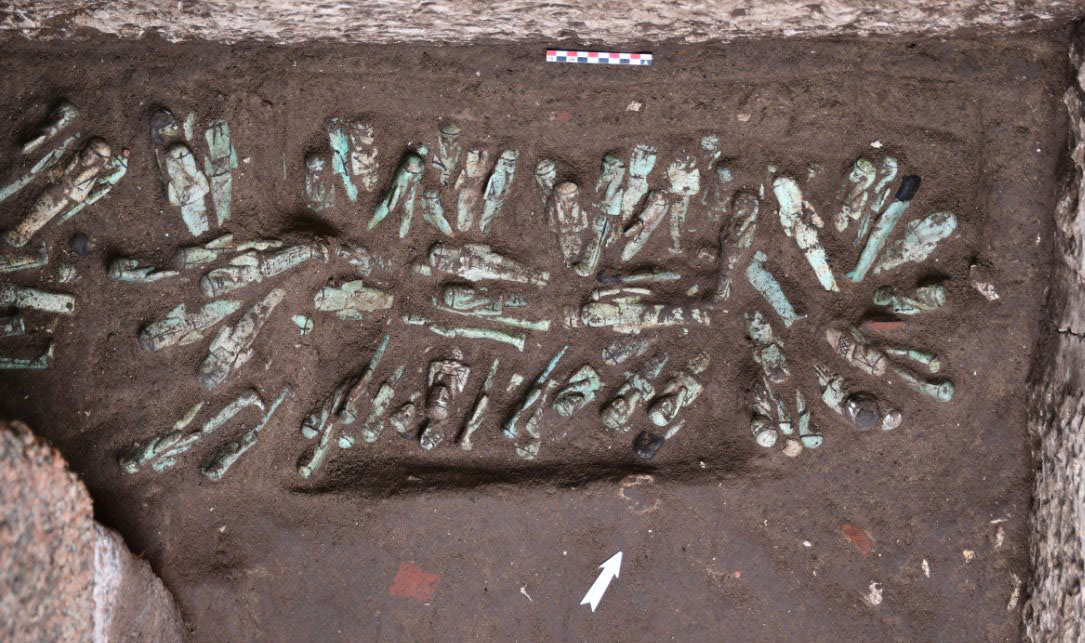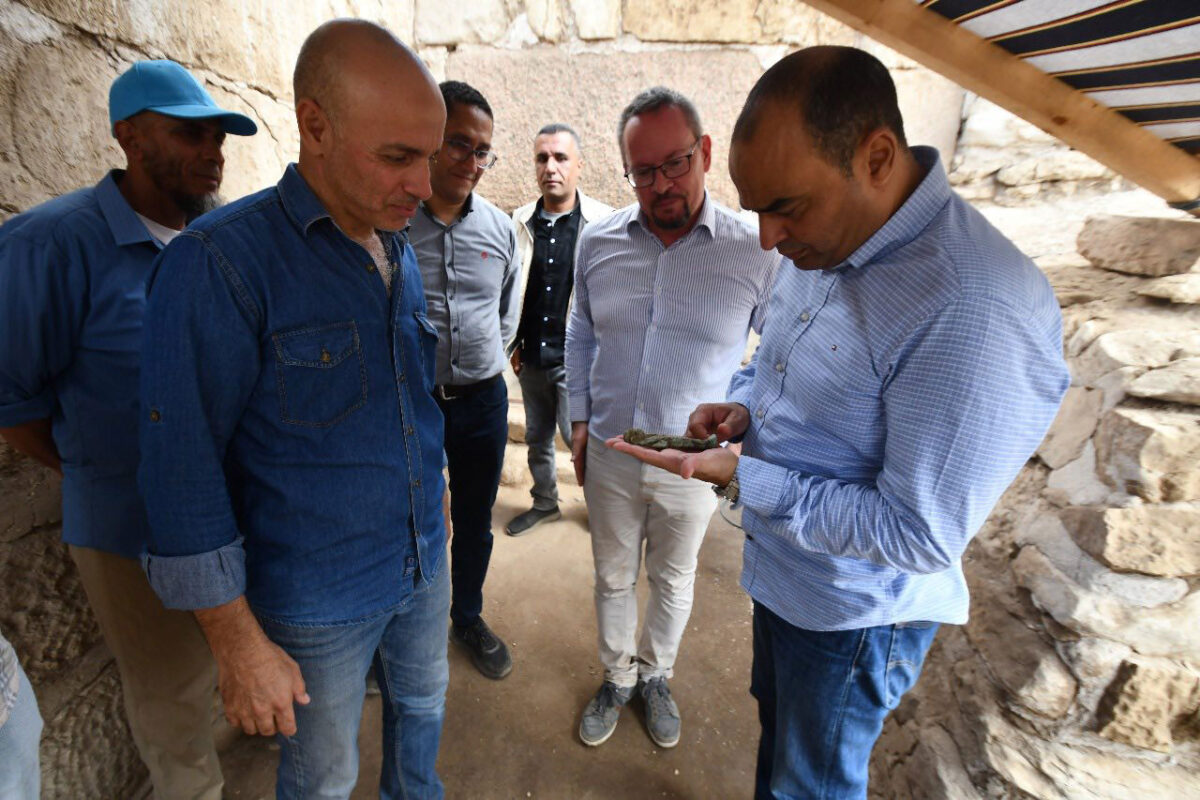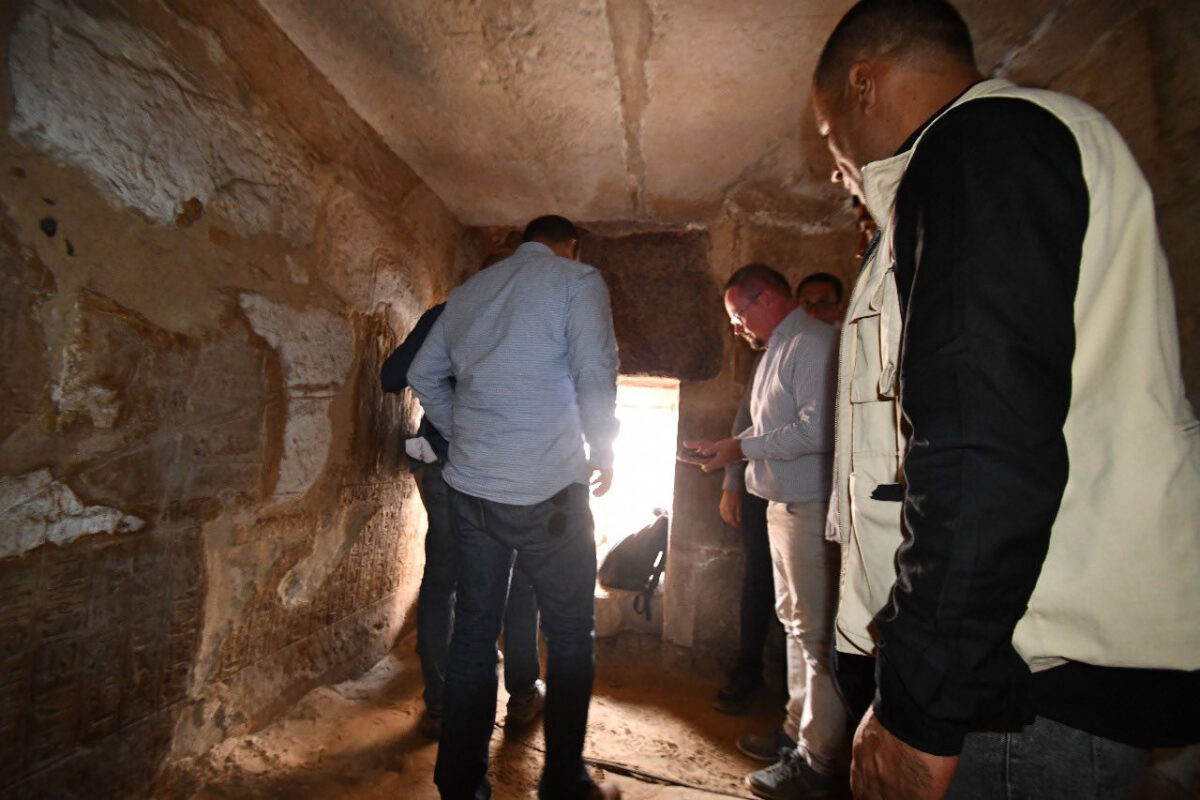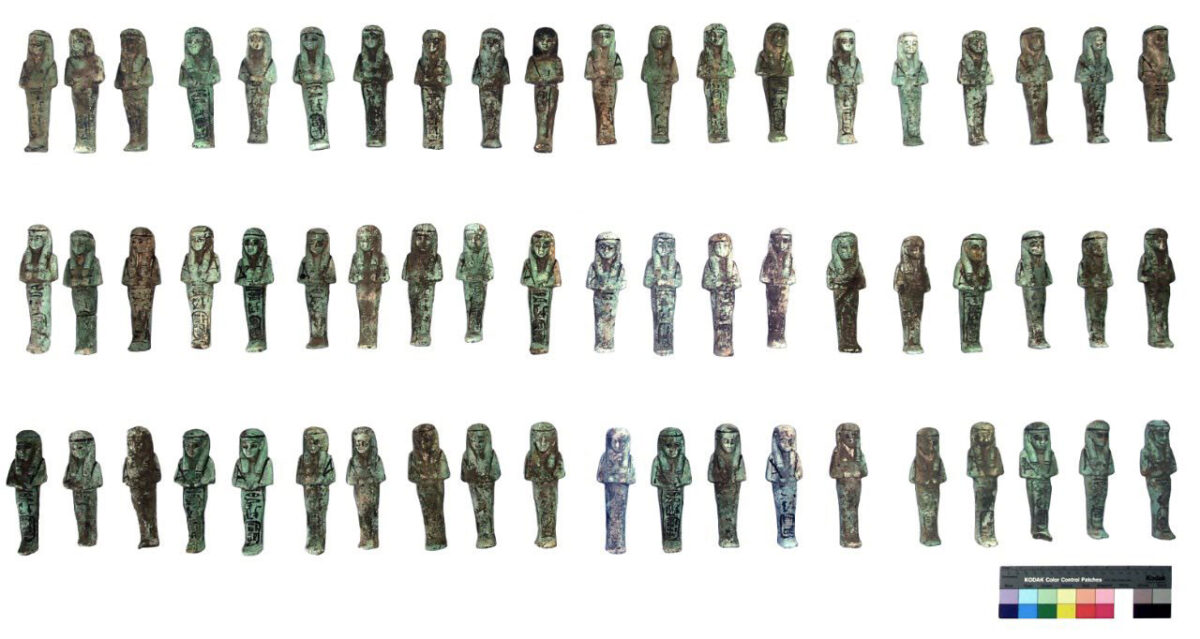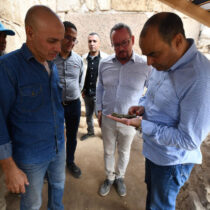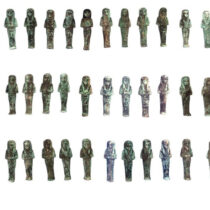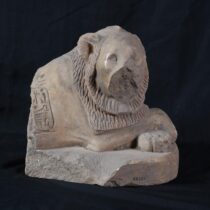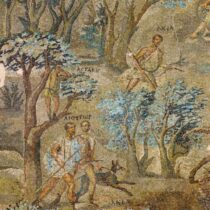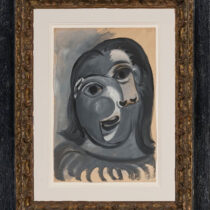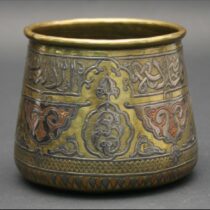The 225 ushabti figurines belonging to King Shoshenq III, which have been unearthed in San el-Hagar, ancient Tanis, could be suggesting an identification of a sarcophagus found in the tomb of King Osorkon II.
The French archaeological mission working at San el-Hagar in Egypt’s Sharqia Governorate, led by Dr. Frédéric Payraudeau (Sorbonne University), has made an important archaeological discovery inside one of the famous royal tombs. This tomb gained prominence in 1939 when a collection of priceless artifacts—known as the “Treasures of Tanis” and currently displayed in the Egyptian Museum in Tahrir—was uncovered.
During the archaeological clearance of the floor in the northern chamber in the tomb of King Osorkon II (22nd Dynasty), the mission discovered a large collection of 225 funerary figurines (ushabti) belonging to King Shoshenq III. Shoshenq III, one of the most prominent rulers of the 22nd Dynasty, is known for his notable architectural contributions in the city of Tanis, which became Egypt’s capital at some point during the 21st Dynasty and remained so during the 22nd and 23rd Dynasties, in the Third Intermediate period (1075–712 BCE). The figurines were found in their original placement, within accumulated layers of silt, near an uninscribed granite sarcophagus that had previously been discovered but whose owner had not been identified.
During his visit to the Tanis excavation site, Dr. Mohamed Ismail Khaled, Secretary-General of the Supreme Council of Antiquities, stated that this discovery represents a unique scientific addition and is considered the most significant finding in the royal tombs of Tanis since 1946. He added that it marks a decisive step toward solving one of the long-standing archaeological mysteries, as new scientific evidence indicates that the sarcophagus belongs to King Shoshenq III. This opens the door to further studies on the nature of royal burials during this period.
He added that the discovery reflects the fruitful cooperation between the French mission and the Egyptian authorities, and confirms that Tanis still holds many undiscovered secrets—necessitating continued excavation and restoration work, as it is one of the most important royal centers of the Third Intermediate Period.
Prof. Mohamed Abdel-Badie, Head of the Egyptian Antiquities Sector, noted that the mission also succeeded in uncovering new and previously unknown inscriptions inside the same chamber, enhancing researchers’ understanding of the development of royal tomb use and burial practices during that period.
Dr. Hesham Hussein, Head of the Central Department of Delta Antiquities, explained that the French mission has been working at the site since 1929 as part of a long-standing partnership with the Supreme Council of Antiquities, aiming to study and restore this important royal site. He pointed out that the discovery came during the preparatory phase of a comprehensive project to protect the royal tomb, which includes installing a modern protective shelter over the tombs, desalination work, and cleaning architectural elements inside and outside the structure.
Dr. Frédéric Payraudeau stated that the next phase will include detailed archaeological studies of the newly discovered inscriptions inside the northern chamber of the tomb of Osorkon II, in addition to completing the cleaning work, which may reveal more information about the burial circumstances of King Shoshenq III.
He added that it is still unclear whether the king was buried directly inside the tomb of Osorkon II, or whether his funerary objects were moved there later for protection. “We still have much work ahead of us to answer these questions,” he said.
